- Mountain View, California
- Cupertino, California
- Saratoga, California
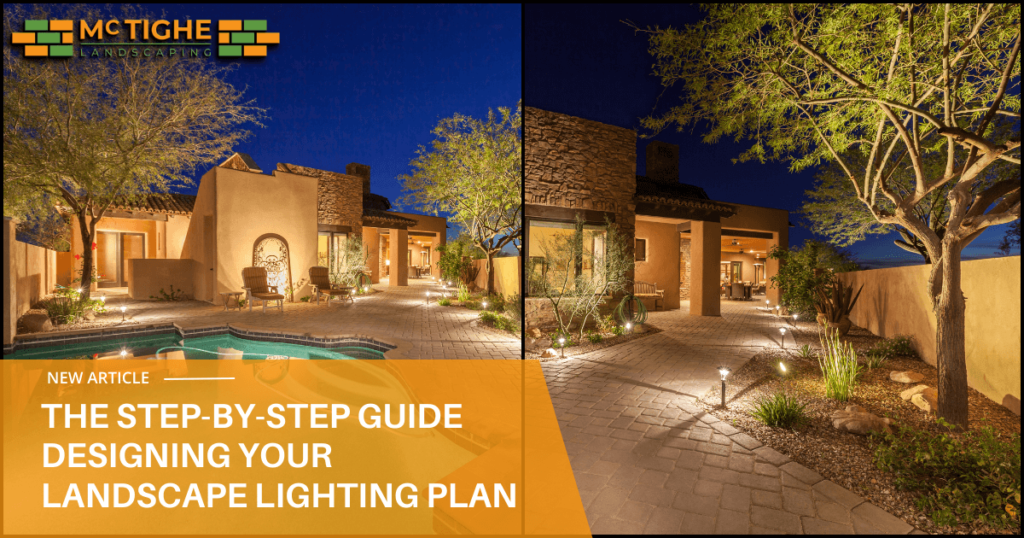
Are you looking to enhance the beauty, safety, and functionality of your outdoor spaces after dark? Landscape lighting is the key to unlocking your yard’s full potential, creating a magical ambiance that extends your living area well into the evening hours.
As experienced landscaping professionals, McTighe Landscaping has compiled this detailed guide to help you navigate the intricacies of landscape lighting design. Whether you’re a DIY enthusiast or considering professional installation, this comprehensive resource will illuminate the path to your perfect outdoor lighting plan.
Before diving into the specifics of design, let’s shed some light on why landscape lighting is a game-changer for your property:
Now that we’ve highlighted the importance of landscape lighting, let’s explore how to create a stunning lighting design for your outdoor spaces.
The first step in creating an effective landscape lighting plan is to thoroughly assess your property after dark. This evaluation will help you identify areas that require lighting and features you want to highlight. Consider the following:
Pro Tip: Create a rough sketch of your property, marking potential lighting locations. This visual aid will be invaluable as you progress through the design process. Take photos of your property at night to identify dark areas and potential hazards that may not be apparent during the day.
With your property assessment complete, it’s time to set clear goals for your landscape lighting design. Common objectives include:
Prioritize these objectives based on your specific needs and preferences. This prioritization will guide your decisions throughout the design process and help you allocate your budget effectively.
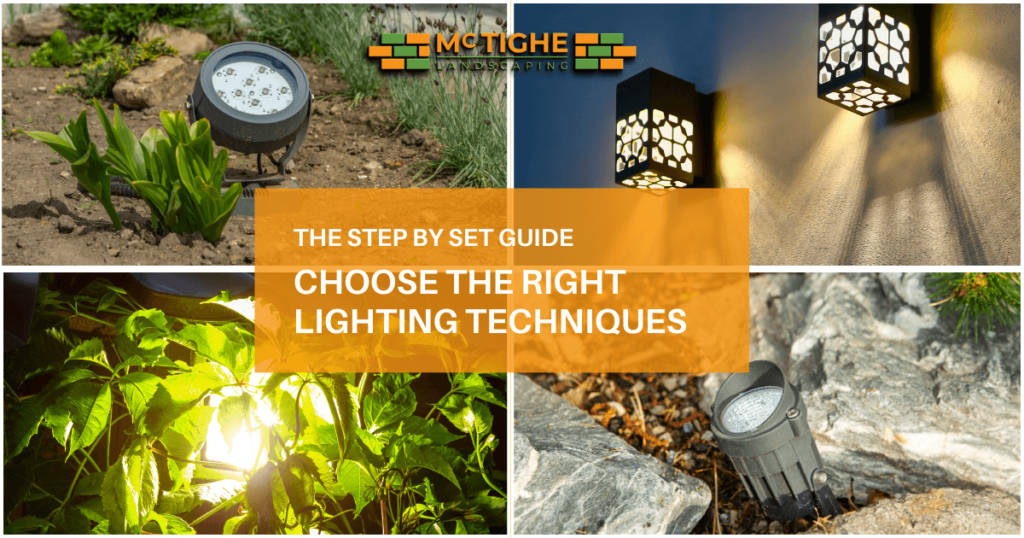
This technique involves placing lights at ground level and directing them upward. It’s excellent for:
Uplighting can make trees appear taller and more majestic, draw attention to interesting bark textures, or accentuate the unique architecture of your home.
Also known as moonlighting, this technique mimics natural light by placing fixtures high in trees or on structures, pointing downward. Use it for:
Downlighting can create a romantic, moonlit effect in your garden or provide practical illumination for outdoor dining areas.
As the name suggests, this technique focuses on lighting walkways and paths. It’s crucial for:
Path lights should be spaced evenly to provide consistent illumination without creating a “runway” effect.
This technique uses focused beams to draw attention to specific features. It’s perfect for:
Accent lighting can be used to create drama and interest in your nighttime landscape, drawing the eye to key features.
By placing lights behind an object and directing them towards a wall or fence, you can create striking silhouettes. Use this technique to:
Silhouette lighting works particularly well with plants or sculptures that have distinctive shapes or outlines.
With your techniques mapped out, it’s time to choose the right fixtures for the job. Here are some common types of landscape lighting fixtures:
When selecting fixtures, consider both functionality and aesthetics. Choose styles that complement your home’s architecture and landscape design. Opt for high-quality, durable materials that can withstand outdoor conditions, such as brass, copper, or powder-coated aluminum.
In today’s environmentally conscious world, energy efficiency is a crucial factor in landscape lighting design. Here are some eco-friendly options to consider:
Consider implementing a combination of these energy-efficient solutions to create a sustainable and cost-effective lighting system for your landscape.
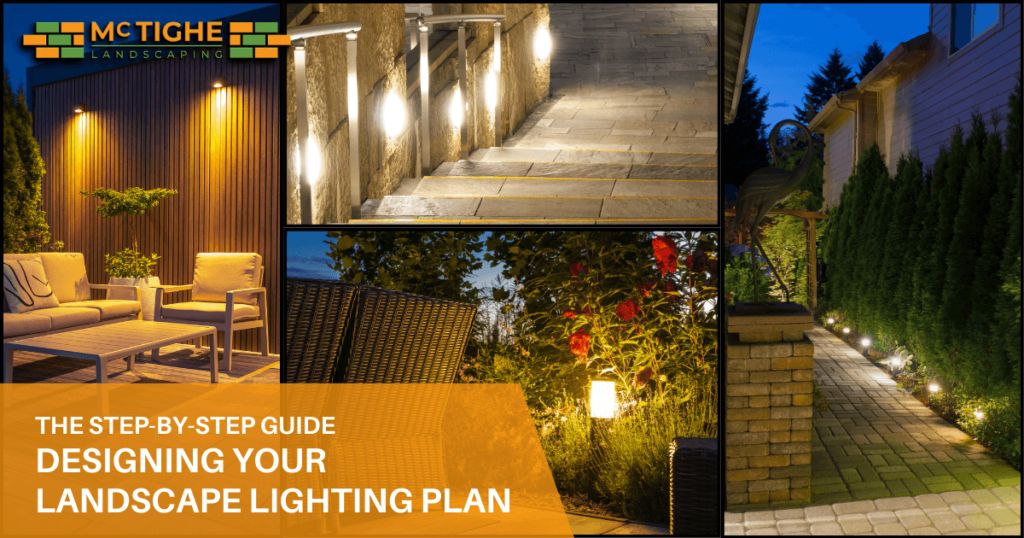
With your objectives set and fixtures selected, it’s time to create a detailed lighting layout. Consider the following principles:
When creating your layout, start with the essential lighting for safety and security, then add layers of aesthetic and functional lighting. Use your property sketch as a guide, marking the location and type of each fixture.
To maximize the efficiency and effectiveness of your landscape lighting system, consider incorporating smart control options:
Implementing a combination of these control options can significantly improve the functionality and energy efficiency of your landscape lighting system.
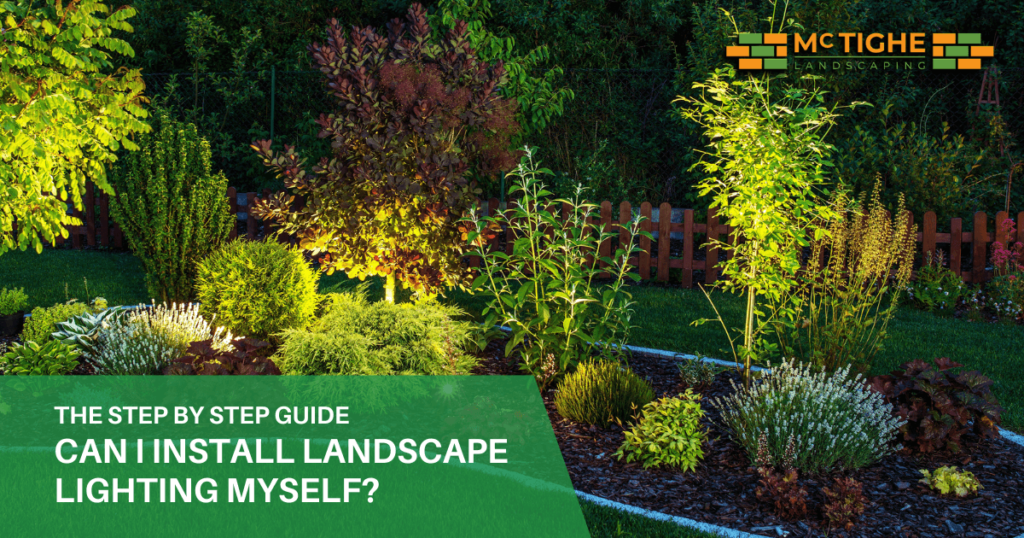
While some homeowners may opt for a DIY approach to landscape lighting, professional installation offers several advantages:
If you choose to go the DIY route, be sure to thoroughly research proper installation techniques and safety precautions before beginning your project. Always consult with a licensed electrician for any work involving electrical systems.
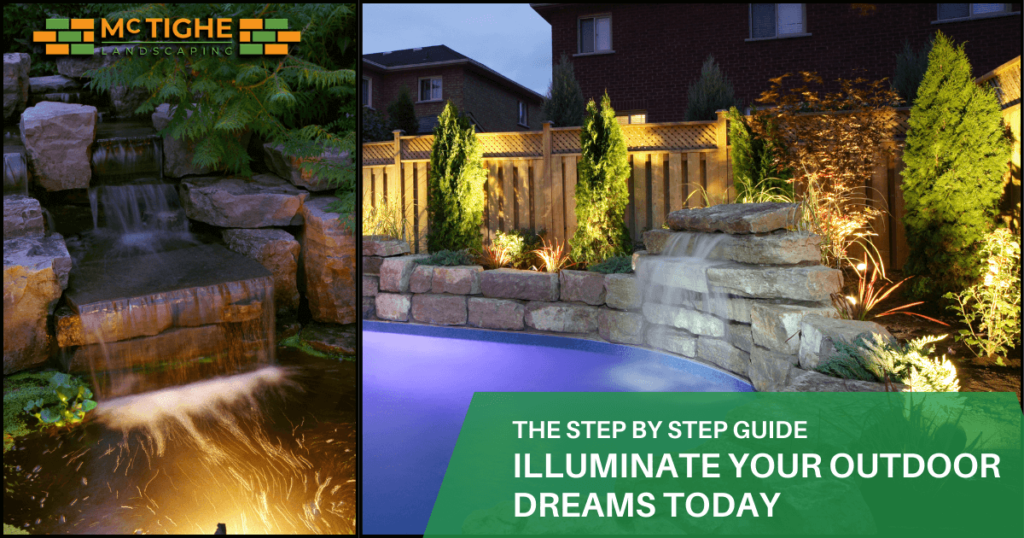
Ready to transform your outdoor spaces with stunning landscape lighting? Don’t leave your property in the dark any longer. Our team of experienced professionals at McTighe Landscaping is here to help you design and install the perfect lighting system for your unique needs and preferences.
A well-designed landscape lighting system is more than just an addition to your property – it’s an investment in beauty, safety, and enjoyment that will pay dividends for years to come. By following the steps outlined in this guide, you can create a captivating nighttime landscape that enhances your home’s curb appeal, improves safety, and extends your outdoor living space.
Remember, whether you choose to tackle this project yourself or enlist the help of professionals, the key to success lies in careful planning, thoughtful design, and quality implementation. Take the time to assess your property, define your objectives, and choose the right techniques and fixtures for your unique landscape.
Don’t wait to bring your landscape lighting vision to life. Contact us today and take the first step towards a beautifully illuminated outdoor oasis that you can enjoy long after the sun goes down.
Call McTighe Landscaping at (669) 232-8050 or share your project ideas with us using our online form. Let’s light up your world together!
Transform your nights, enhance your home’s beauty, and create unforgettable outdoor experiences with expert landscape lighting design. Your dream nightscape awaits – let McTighe Landscaping help you make it a reality.
High-quality LED landscape lights can last up to 50,000 hours or more, which translates to about 10-20 years of regular use. This long lifespan makes them an excellent investment for your outdoor lighting needs. However, it's important to note that the actual lifespan can vary depending on factors such as usage patterns, environmental conditions, and the quality of the LED fixtures. Regular maintenance and proper installation can help maximize the longevity of your LED landscape lights.
While it's possible to install some landscape lighting yourself, particularly solar or low-voltage systems, professional installation is recommended for more complex setups or when working with line-voltage systems. This ensures safety, code compliance, and optimal performance. If you're confident in your DIY skills and have experience with electrical work, you might be able to handle a simple low-voltage system. However, for more elaborate designs or if you're unsure about any aspect of the installation, it's best to consult with a professional landscaping company.
Regular maintenance of your landscape lighting system includes cleaning fixtures, trimming plants around lights, checking and tightening connections, and replacing bulbs as needed. It's also a good idea to adjust fixture positioning seasonally to account for plant growth. Here are some specific maintenance tasks:
Proper maintenance will help ensure your landscape lighting system continues to perform optimally for years to come.
Low-voltage systems operate at 12 volts and are safer, more energy-efficient, and easier to install than line-voltage systems, which operate at 120 volts. Here are the key differences:
Line-voltage systems are typically used for larger properties or when more powerful lighting is required, such as for large flood lights or security lighting. However, for most residential landscape lighting needs, low-voltage systems are the preferred choice due to their safety, efficiency, and flexibility.
